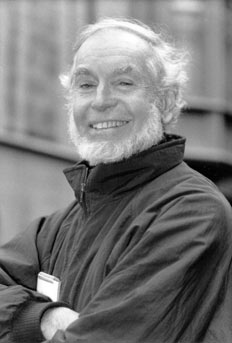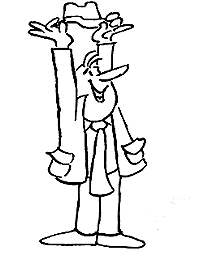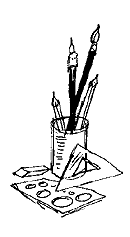 |
|
||
|
|
|||
|
When I was asked to teach animation, after years of working in the field, I found there were few texts available to guide serious students. Animation, The Whole Story is the result of hundreds of hours of instruction in various classes. As an animator turned teacher, I discovered that student's difficulties with drawing, animating and the creation of stories were exactly those that I had also grappled with. My classes are derived from my personal experience in approaching typical problems, and these encounters have become the basis of this book. Animators are honest people who take
their work very seriously, they know you can't fake it, and
they know you can't talk it. To get good results takes long,
hard, careful effort. To arrive at a point where you know
what works and what doesn't requires experience.
Traditionally, individuals learned animation by working in
one or more studios under the pressure of deadlines, in the
presence of intractable artists who were not always free
with their advice. When I started in the field I was fortunate to be able to work with veteran animator Irving Spector. "Spec," only too happy to take a break from his own tasks, welcomed the opportunity to offer guidance. He was a writer as well as an animator and his work was full of invention. There was little evidence of struggle in his drawings of characters and the worlds they inhabited. I was all of 19 and he, 15 years my senior, had put in considerable time at studios in Hollywood and New York. He understood my clashes with the complexities of the medium and that it would take time and patience for me to achieve my goals. His response was, "When you're 32, you'll know how to do it." My purpose in this book is to tell the whole story of animation for people truly interested in this medium, to help fill the gaps in information - no matter what their age. Basically, to learn animation, do
animation. Cast yourself in the roles of director, writer,
animator and camera operator. Decide the events that will
become a story, and create the characters that will act in
it. Choose the technique you're most comfortable with, be it
drawing on paper, cels, clear movie film, or using cut-outs,
clay, sand, puppets or computers. Whichever direction you take, you' ll find that drawing is basic to animation. From the creation of storyboards to the designing of characters and settings, from the planning of special effects to the preliminary plotting of computer images, the pencil is the foremost tool. To draw, you must first learn to see, to observe how people and things look and then to quickly get your impressions on paper. Drawing, though, is but a means to an end. Pictures on the screen move in time, and unlike pages in a book, are not meant to be studied individually. This matter of time relates very definitely to the spaces between the drawings and their duration in a sequence. It is the soul of animation, and it is their respect for timing that casts animators in the role of actors. But, before there is any animation
there must be a story. How do dislocated ideas and gags
become a series of smooth, flowing scenes? It happens in the
making of a storyboard, a method used by animators around
the world, in which small sketches are arranged, rearranged,
discarded or changed before any animation is begun. With a
storyboard, a continuity is formed and a progression of
actions and events is given a structure.
Once the storyboard
is complete, the characters and locations are detailed in
pencil or on a computer. Though computer animation is a much
used technique, it is briefly touched on in this book. With
the speedy changes and upgrading in that sphere, everything
written about it is obsolete before the ink is dry. Yet,
computer animators who lack an understanding of traditional
methods are poorly prepared, no matter how many programs
they've mastered.
To that end an international historyof the medium is included, a
chronicle of the many attempt to bring pictures to life. It tells of the beginnings of
animation, the arrival of studios, the introduction of characters, styles and techniques, and
the opportunities for
animators in today's merry-go-round of film, television.
computer and internet creations. It ís all in the mix, like a
fruitcake, and like a story.
Here is the story of animation and
what makes it move.
H. B. |
|
||
|
|
|
|
|
|
|
|
|
|

 Animation is a compact medium, its
strength is its conciseness. It ís like a fruitcake,
embracing many wonderful things in a tight space, and like a
fruitcake it can be very nutty.The animated picture goes beyond the
scope of live-action films and television, there is no other
graphic art that so stretches the imagination to get a
laugh, display an abstraction, explain a method or sell a
product. It is the ultimate fantasy medium twisting time and
distorting shapes. Yet even as it amuses and soothes it also
describes and instructs. It is a magnificent form for
expressing ideas. It is also fun to do, and you don't have
to like fruitcake to do it.
Animation is a compact medium, its
strength is its conciseness. It ís like a fruitcake,
embracing many wonderful things in a tight space, and like a
fruitcake it can be very nutty.The animated picture goes beyond the
scope of live-action films and television, there is no other
graphic art that so stretches the imagination to get a
laugh, display an abstraction, explain a method or sell a
product. It is the ultimate fantasy medium twisting time and
distorting shapes. Yet even as it amuses and soothes it also
describes and instructs. It is a magnificent form for
expressing ideas. It is also fun to do, and you don't have
to like fruitcake to do it.

